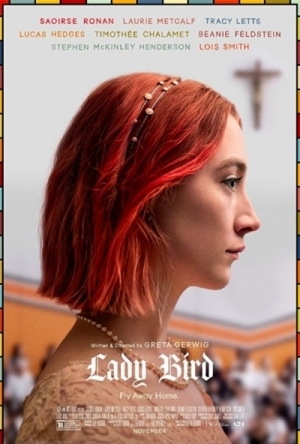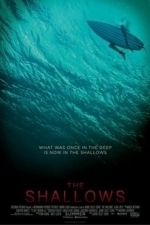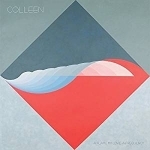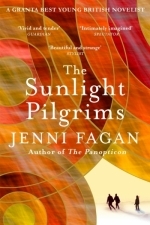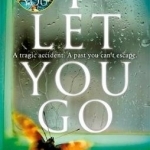Search
Search results
Bob Mann (459 KP) rated Lady Bird (2017) in Movies
Sep 29, 2021
“What if this is the best version”.
When did you grow up? I am now 57, and I’m still “working towards”! I remember distinctly though at the age of 16 thinking “I’ve got there”. And then again at 18. And then again at 21. And then again at 25…. There is something sweet about the certainty of youth that only life’s ultimate experiences can roughen the edges of.
“Lady Bird”, the directorial debut of Greta Gerwig, features one such teen who thinks she knows it all. Looking and acting for all the world like a 15 year old (something that Margot Robbie really can’t pull off in “I, Tonya”) Saoirse Ronan plays Christine McPherson who has the given name (“I gave the name to myself”) of ‘Lady Bird’. She is struggling with a lot of issues: an unreasonable and overbearing (parents: read ‘perfectly reasonably but firm’) mother (Laurie Metcalf, “Roseanne”); the issues of puberty and young love; the constrictions of a Catholic school she despises; and her inability to perform to the grades she needs to get into a college of her choice. That choice being on the East coast as far away from the backwater of Sacremento (“the mid-west of California” – LoL) as she can get.
Love comes in the form of two serial male fixations: the gorgeous and artistic Danny (Lucas Hedges, “Three Billboards Outside Ebbing, Missouri”, “Manchester By The Sea”) and the aloof and enigmatic Kyle (Timothée Chalamet, “Call Me By Your Name”).
This is a near perfect coming of age film. The plot, while fairly superficial and covering ground well-trodden before, fully engages you and makes the running time just fly by. And there is just so much talent on show. The script by Gerwig is chocker-block full of great and memorable lines; Ronan is pitch-perfect as the irascible and cock-sure teen; Tracy Letts (“The Post“) is magnificent in the less showy role as the “good cop” dad, struggling invisibly with his own demons; and Metcalf gives an Oscar-nominated performance that really should give Alison Janney a run for her money… a drive away from an airport conveys just perfectly every college-age parent’s emotional low-point.
Where perhaps the film overplays its hand a bit is in the “wrong side of the tracks” line. The household while struggling is by no means trailer-park poor (compare and contrast with “I, Tonya”): perhaps this is the depths of financial desperation found in Sacremento? But I doubt it… there still seems to be money available for fancy cowgirl outfits.
Which leads me to the rating, which seems to have been a common rant in the last few weeks. I would have thought that there was nothing like this film to turn the mirror of reasonableness on a young teen, perhaps helping them to treat their parents better, work harder for college or make better choices. Yet it has a UK 15 certificate. And for what? There is a full frontal male photo-spread in “Playgirl” (I want to say “it’s a penis, get over it”, but if forced I would have frankly just snipped the 50 milliseconds out to get the lower rating). And there are a few (only a few) F- and C- words. I have the same problem here as with “Phantom Thread” – here is a high-class film that a young teen audience would absolutely love to see. I think the BBFC have got it wrong again here.
I cannot recommend this film enough: a tale of teenage life love and resolution that is hard to beat. Possibly one of the best coming of age tales I’ve ever seen. On the basis that it looks like I will never get to see “Call Me By Your Name” – the only major one I’ve missed – before this Sunday’s Oscar ceremony, what a great way to round off my Oscar-viewing season.
“Lady Bird”, the directorial debut of Greta Gerwig, features one such teen who thinks she knows it all. Looking and acting for all the world like a 15 year old (something that Margot Robbie really can’t pull off in “I, Tonya”) Saoirse Ronan plays Christine McPherson who has the given name (“I gave the name to myself”) of ‘Lady Bird’. She is struggling with a lot of issues: an unreasonable and overbearing (parents: read ‘perfectly reasonably but firm’) mother (Laurie Metcalf, “Roseanne”); the issues of puberty and young love; the constrictions of a Catholic school she despises; and her inability to perform to the grades she needs to get into a college of her choice. That choice being on the East coast as far away from the backwater of Sacremento (“the mid-west of California” – LoL) as she can get.
Love comes in the form of two serial male fixations: the gorgeous and artistic Danny (Lucas Hedges, “Three Billboards Outside Ebbing, Missouri”, “Manchester By The Sea”) and the aloof and enigmatic Kyle (Timothée Chalamet, “Call Me By Your Name”).
This is a near perfect coming of age film. The plot, while fairly superficial and covering ground well-trodden before, fully engages you and makes the running time just fly by. And there is just so much talent on show. The script by Gerwig is chocker-block full of great and memorable lines; Ronan is pitch-perfect as the irascible and cock-sure teen; Tracy Letts (“The Post“) is magnificent in the less showy role as the “good cop” dad, struggling invisibly with his own demons; and Metcalf gives an Oscar-nominated performance that really should give Alison Janney a run for her money… a drive away from an airport conveys just perfectly every college-age parent’s emotional low-point.
Where perhaps the film overplays its hand a bit is in the “wrong side of the tracks” line. The household while struggling is by no means trailer-park poor (compare and contrast with “I, Tonya”): perhaps this is the depths of financial desperation found in Sacremento? But I doubt it… there still seems to be money available for fancy cowgirl outfits.
Which leads me to the rating, which seems to have been a common rant in the last few weeks. I would have thought that there was nothing like this film to turn the mirror of reasonableness on a young teen, perhaps helping them to treat their parents better, work harder for college or make better choices. Yet it has a UK 15 certificate. And for what? There is a full frontal male photo-spread in “Playgirl” (I want to say “it’s a penis, get over it”, but if forced I would have frankly just snipped the 50 milliseconds out to get the lower rating). And there are a few (only a few) F- and C- words. I have the same problem here as with “Phantom Thread” – here is a high-class film that a young teen audience would absolutely love to see. I think the BBFC have got it wrong again here.
I cannot recommend this film enough: a tale of teenage life love and resolution that is hard to beat. Possibly one of the best coming of age tales I’ve ever seen. On the basis that it looks like I will never get to see “Call Me By Your Name” – the only major one I’ve missed – before this Sunday’s Oscar ceremony, what a great way to round off my Oscar-viewing season.
Bob Mann (459 KP) rated The Shallows (2016) in Movies
Sep 29, 2021
The Deathly Shallows, part 1
Every shark movie is inevitably compared (unfavourably) against Spielberg’s classic 1975 tourist-muncher. And “The Shallows” is no exception. But while not a 5-Fad classic, this flick comes pretty close by being hugely enjoyable and having a lot going for it.
Waxing lyrically. The shapely Blake Liveley.
Waxing lyrically. The shapely Blake Liveley.
Blake Lively (“The Age of Adeline“) plays surfer and trainee doctor Nancy, still grieving the recent death from cancer of her mother and travelling to a remote Mexican surf beach where she has photos of her mother surfing while pregnant with her. While surfing alone, Nancy is attacked a couple of hundred yards from the shore by a Great White and severely injured. She has the choice of refuge of either a low rock or another less palatable floating object. Choosing the rock (at low tide) she is faced with the dilemma of both surviving her injuries and then being rescued before the high tide takes the rock and leaves her to the mercy of the ever circling big-fish.
We're going to need a bigger rock.
We’re going to need a bigger rock.
A big summer blockbuster this is not, with a total cast of eleven (not including a guest appearance of Steven Seagull (as himself)). But the small cast doesn’t make it less gripping, and gripping it most certainly is, with tension building progressively (emphasised periodically by an on-screen clock) with the countdown to high tide.
Blake Lively is an underrated actress and really delivers the goods here. And bearing in mind the problems that Spielberg had with his mechanical shark Bruce (named after Spielberg’s lawyer) the appearance of the shark is limited to where actually needed, with Lively having to fill in the blanks with reaction shots. As your imagination is still far better than any special effects, this is hugely effective for certain sequences.
Pure horror: here Dad had gone down to the video rental and come back with 'Dirty Grandpa'.
Pure horror: her Dad had gone down to the video rental and come back with ‘Dirty Grandpa’.
The film draws similarities to another interesting entry in the “Jaws” genre – “Open Water 2: Adrift” from 2006. In that film there was the same incessant threat of shark attack combined with the audience frustration that safety (in that case, the deck of their yacht, if only they had let a ladder down) being so near. Here the 200 yards to the shore is shoutable to but still 190 yards too far.
The cinematography (by Flavio Martínez Labiano) is also just beautifully done with some stunning surf and underwater shots that not only highlight Ms Lively’s lithely (sic) figure and her Californian surfing skills, but also the beauty of the ‘Mexican coast’ (actually Lord Howe Island in New South Wales, Australia).
“The Shallows” was written by Anthony Jaswinski and directed by Jaume Collet-Serra (the director of “Non-Stop“, aka Taken 3.5). It comes with a truly impressive BvS quotient of just 5.9%!
So with all of this going for it, you would think that my rating is heading towards at least a 4.5. But all films like this require a satisfying denouement, and unfortunately this is where this one comes off the rails. It is just plain silly and, together with an unnecessary and irritating epilogue scene, diminishes what was on track to be one of the best films of the summer. So here’s the “One Mann’s Movies” solution:
Using Final Cut X, Adobe Premier or your favourite video editing suite, cut out the scene from 115:00 to 116:00 from “Jaws”;
Photoshop Blake Lively’s face onto Roy Scheider’s body.
Insert the finished clip into “The Shallows” at about 82 minutes in.
Enjoy a 5-Fad classic!
This limitation aside, it’s still worth your while hunting it out at a cinema near you, since the fantastic cinematography is best suited to a big screen.
Waxing lyrically. The shapely Blake Liveley.
Waxing lyrically. The shapely Blake Liveley.
Blake Lively (“The Age of Adeline“) plays surfer and trainee doctor Nancy, still grieving the recent death from cancer of her mother and travelling to a remote Mexican surf beach where she has photos of her mother surfing while pregnant with her. While surfing alone, Nancy is attacked a couple of hundred yards from the shore by a Great White and severely injured. She has the choice of refuge of either a low rock or another less palatable floating object. Choosing the rock (at low tide) she is faced with the dilemma of both surviving her injuries and then being rescued before the high tide takes the rock and leaves her to the mercy of the ever circling big-fish.
We're going to need a bigger rock.
We’re going to need a bigger rock.
A big summer blockbuster this is not, with a total cast of eleven (not including a guest appearance of Steven Seagull (as himself)). But the small cast doesn’t make it less gripping, and gripping it most certainly is, with tension building progressively (emphasised periodically by an on-screen clock) with the countdown to high tide.
Blake Lively is an underrated actress and really delivers the goods here. And bearing in mind the problems that Spielberg had with his mechanical shark Bruce (named after Spielberg’s lawyer) the appearance of the shark is limited to where actually needed, with Lively having to fill in the blanks with reaction shots. As your imagination is still far better than any special effects, this is hugely effective for certain sequences.
Pure horror: here Dad had gone down to the video rental and come back with 'Dirty Grandpa'.
Pure horror: her Dad had gone down to the video rental and come back with ‘Dirty Grandpa’.
The film draws similarities to another interesting entry in the “Jaws” genre – “Open Water 2: Adrift” from 2006. In that film there was the same incessant threat of shark attack combined with the audience frustration that safety (in that case, the deck of their yacht, if only they had let a ladder down) being so near. Here the 200 yards to the shore is shoutable to but still 190 yards too far.
The cinematography (by Flavio Martínez Labiano) is also just beautifully done with some stunning surf and underwater shots that not only highlight Ms Lively’s lithely (sic) figure and her Californian surfing skills, but also the beauty of the ‘Mexican coast’ (actually Lord Howe Island in New South Wales, Australia).
“The Shallows” was written by Anthony Jaswinski and directed by Jaume Collet-Serra (the director of “Non-Stop“, aka Taken 3.5). It comes with a truly impressive BvS quotient of just 5.9%!
So with all of this going for it, you would think that my rating is heading towards at least a 4.5. But all films like this require a satisfying denouement, and unfortunately this is where this one comes off the rails. It is just plain silly and, together with an unnecessary and irritating epilogue scene, diminishes what was on track to be one of the best films of the summer. So here’s the “One Mann’s Movies” solution:
Using Final Cut X, Adobe Premier or your favourite video editing suite, cut out the scene from 115:00 to 116:00 from “Jaws”;
Photoshop Blake Lively’s face onto Roy Scheider’s body.
Insert the finished clip into “The Shallows” at about 82 minutes in.
Enjoy a 5-Fad classic!
This limitation aside, it’s still worth your while hunting it out at a cinema near you, since the fantastic cinematography is best suited to a big screen.
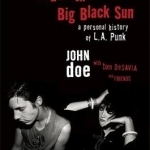
Under the Big Black Sun: A Personal History of L.A. Punk
John Doe and Tom DeSavia
Book
Under the Big Black Sun explores the nascent Los Angeles punk rock movement and its evolution to...
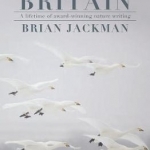
Wild About Britain: A Lifetime of Award-Winning Nature Writing
Book
A new collection of award-winning journalist and author Brian Jackman's nature and travel writings...
AA
African American History
Book
A groundbreaking approach to primary source documents, with in-depth expert analysis of the court...
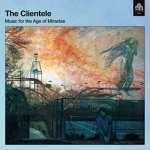
Music for the Age of Miracles by The Clientele
Album Watch
The Clientele return in September with Music for the Age of Miracles, their first release of new...
rock
Eilidh G Clark (177 KP) rated The Sunlight Pilgrims in Books
May 13, 2017
Smashing novel
‘What are you meant to do when a humongous cloud is coming toward you on a sheer mountain drop? He lifts his phone and there are no bars, he can’t even google it. Two eagles spiral out of the cloud, calling to each other, and one has something small gripped in it’s claws. They coast on the wind – each wingspan must be about three feet – and they appear almost still.’
Jenni Fagan’s The Sunlight Pilgrims was published by Windmill Books in 2015 and for me, was a much-anticipated novel. After reading her debut novel, The Panopticon, my expectations were high and I was not disappointed. This is a pre-apocalyptic novel set in a fictional Scottish town of Clachan Fells in the not too distant future of 2020. The novel explores the lives of a community of eccentric individuals living in close the proximity of a caravan park. As the temperatures plunge into extreme minuses, the residents are faced with a bleak and uncertain future, not only of their own survival, but also the survival of the human race.
The most interesting thing about this novel is that on the surface, nothing really happens, yet it would be wise to look deeper. Amongst the daily challenges of individual lives, there lurks a thought provoking tale of identity, community, and environment.
The novel is written from the perspective of two of its main characters Stella – a transgender teenager and Dylan a Londoner who recently moves to Clachan Fells. The most interesting thing about these two characters is the perspectives that each individual has about place. For Stella, her world is a difficult place full of prejudice and rejection, even from her own father. Whilst her own personal identity is unquestionable, the community rejects her choices. This point of view provokes the reader to question the nature of identity, a topic often argued when discussing Scotland. From Stella’s point of view, her own identity is progressive, changing, developing while the society around her static. Alistair’s point of view however, allows the reader a modern and open approach. Described in the prologue as the Incomer (notice the capitalization) directs the reader towards Margaret Elphinstone’s novel The Incomer published in 1987. Elphinstone’s novel is a post-apocalyptic tale and, like Fagan’s, novel examines the question of identity. Thomas Christie suggests in Notional Identities, that Elphinstone is ‘depicting the country’s ability to adapt to extreme change¬ ̶ carving a form of localism from the bones of globalisation ̶ she recognises its progressive aptitude to embrace forces of social transformation while retaining recognisable core cultural imperatives.’ It is no coincidence that Fagan has subtly steered the reader to this novel; identity is clearly a topic that the author is keen to explore. Dylan is a progressive character in Fagan’s novel. Discovering Stella identity very early in the novel, the character never questions her choices or that of Mother who has two partners. Likewise, this progressive thinking expands to the other residents of the caravan park, which houses a prostitute, an alien worshipper, and a disabled man with a crooked back who worships the sky. Not only does Dylan accept people for who they are; his deep connection to the environment makes him instinctive as opposed to the more rational thinkers of the world.
Unlike many modern writers, Fagan raises more questions about society and identity than she answers. This is an interesting technique as it leaves the reader to question the novel as opposed to question to authors own political and societal views. That said there is no doubt that this is a Scottish novel. The story is steeped in Scottish mythical symbolism such as the blackbird that lands on a fence post with his eyes reflecting a vast mountain range, to the eagles and stag’s on the mountains. In addition, the characters take on mythical persona’s including a giant, a girl with second sight, and a moon polisher. With oral tales of Sunlight Pilgrims highlighting the Scottish oral storytelling tradition, and a poetic sentence structure done in true Fagan style this novel feels truly Scottish.
I would highly recommend this postmodern novel, which urges the reader to look beyond society and address the problems of ego and the rational mind in order to create a progressive unified world where outsiders are welcomed as incomers – a prevalent issue in today’s society.
Jenni Fagan’s The Sunlight Pilgrims was published by Windmill Books in 2015 and for me, was a much-anticipated novel. After reading her debut novel, The Panopticon, my expectations were high and I was not disappointed. This is a pre-apocalyptic novel set in a fictional Scottish town of Clachan Fells in the not too distant future of 2020. The novel explores the lives of a community of eccentric individuals living in close the proximity of a caravan park. As the temperatures plunge into extreme minuses, the residents are faced with a bleak and uncertain future, not only of their own survival, but also the survival of the human race.
The most interesting thing about this novel is that on the surface, nothing really happens, yet it would be wise to look deeper. Amongst the daily challenges of individual lives, there lurks a thought provoking tale of identity, community, and environment.
The novel is written from the perspective of two of its main characters Stella – a transgender teenager and Dylan a Londoner who recently moves to Clachan Fells. The most interesting thing about these two characters is the perspectives that each individual has about place. For Stella, her world is a difficult place full of prejudice and rejection, even from her own father. Whilst her own personal identity is unquestionable, the community rejects her choices. This point of view provokes the reader to question the nature of identity, a topic often argued when discussing Scotland. From Stella’s point of view, her own identity is progressive, changing, developing while the society around her static. Alistair’s point of view however, allows the reader a modern and open approach. Described in the prologue as the Incomer (notice the capitalization) directs the reader towards Margaret Elphinstone’s novel The Incomer published in 1987. Elphinstone’s novel is a post-apocalyptic tale and, like Fagan’s, novel examines the question of identity. Thomas Christie suggests in Notional Identities, that Elphinstone is ‘depicting the country’s ability to adapt to extreme change¬ ̶ carving a form of localism from the bones of globalisation ̶ she recognises its progressive aptitude to embrace forces of social transformation while retaining recognisable core cultural imperatives.’ It is no coincidence that Fagan has subtly steered the reader to this novel; identity is clearly a topic that the author is keen to explore. Dylan is a progressive character in Fagan’s novel. Discovering Stella identity very early in the novel, the character never questions her choices or that of Mother who has two partners. Likewise, this progressive thinking expands to the other residents of the caravan park, which houses a prostitute, an alien worshipper, and a disabled man with a crooked back who worships the sky. Not only does Dylan accept people for who they are; his deep connection to the environment makes him instinctive as opposed to the more rational thinkers of the world.
Unlike many modern writers, Fagan raises more questions about society and identity than she answers. This is an interesting technique as it leaves the reader to question the novel as opposed to question to authors own political and societal views. That said there is no doubt that this is a Scottish novel. The story is steeped in Scottish mythical symbolism such as the blackbird that lands on a fence post with his eyes reflecting a vast mountain range, to the eagles and stag’s on the mountains. In addition, the characters take on mythical persona’s including a giant, a girl with second sight, and a moon polisher. With oral tales of Sunlight Pilgrims highlighting the Scottish oral storytelling tradition, and a poetic sentence structure done in true Fagan style this novel feels truly Scottish.
I would highly recommend this postmodern novel, which urges the reader to look beyond society and address the problems of ego and the rational mind in order to create a progressive unified world where outsiders are welcomed as incomers – a prevalent issue in today’s society.
Kristy H (1252 KP) rated I Let You Go in Books
Feb 1, 2018
One rainy evening, an accident occurs on a quiet neighborhood street. Walking home from school with his mother, young Jacob is hit by a car, and killed. Even worse, the car quickly backs up and drives away, leaving Jacob's mother shattered and Detective Inspector Ray Stevens and his team, particularly eager young DC Kate, to seek out answers.
With her world ruined by the accident, Jenna Gray seeks refuge by the coast. She finds a small cottage, gets a dog, and tries to escape the nightmares of the accident that haunt both her dreams and waking hours. Meanwhile, Ray and Kate are forced to close Jacob's case, no closer to the suspect than when they started. But the two remain undaunted, working on the case in their off hours, and an anniversary plea one year after the accident turns up some potential leads. What exactly happened that rainy night? Will justice ever come for Jacob--and peace for Jenna?
This was an excellent thriller-- a real surprise, honestly. The beginning of the novel started out slow, and was so horrendously sad, what with Jacob's accident and his mother's terrible grief. It was one of several book's I'd read lately involving the death of a child, and I was so saddened that I almost set it aside. I'm glad I didn't though, because while the book is gut-wrenchingly sad, it's excellent, tense, and suspenseful. Divided into several parts, things pick up immensely at the end of the first part, when Mackintosh throws in an excellent plot twist (I shan't say anymore so as not to ruin it).
Mackintosh is excellent at conveying Jenna's anguish and the sadness that the accident causes. We also have a side-plot of Ray and his feelings toward his subordinate, Kate. Ray's home life is unbalanced: he's dealing with issues with his son, Tom, and his wife. These are a bit distracting at times, but serve to humanize him as well. The police subplot (watching them try to piece things together) is interesting, also. In fact, the book alternates in perspectives: we hear from Ray, Jenna, and one more character. In part 2, we go back in time for some of the characters, but remain in the present with Ray and Kate as they (much like us, the readers) try to solve this crime. It's an interesting technique and works surprisingly well. Jenna is a complicated character, but a well-drawn one.
Overall, I quite enjoyed this book. I won't spoil anything, but I will say that there is definitely a trigger for domestic abuse/violence, so please be forewarned for that. There's a character in the novel who reminds me of the husband in that creepy Julia Roberts' film "Sleeping with the Enemy" (I'm totally dating myself here). As such I was up late reading one night, completely creeped out. However, that's the sign of an excellent thriller in my opinion. I raced through the last 2/3 of the book and really wasn't disappointed. There are several more twists, but they actually are pretty believable, not outlandish like in many thrillers. Definitely recommend this one (with the abuse caveat thrown in). A unique psychological thriller that's worth your time, for sure.
I received an ARC of this novel from Netgalley - thank you! The U.S. edition is available everywhere on 5/3/16. You can find a review of this book and many more at my <a href="http://justacatandabookatherside.blogspot.com/">blog</a>;.
With her world ruined by the accident, Jenna Gray seeks refuge by the coast. She finds a small cottage, gets a dog, and tries to escape the nightmares of the accident that haunt both her dreams and waking hours. Meanwhile, Ray and Kate are forced to close Jacob's case, no closer to the suspect than when they started. But the two remain undaunted, working on the case in their off hours, and an anniversary plea one year after the accident turns up some potential leads. What exactly happened that rainy night? Will justice ever come for Jacob--and peace for Jenna?
This was an excellent thriller-- a real surprise, honestly. The beginning of the novel started out slow, and was so horrendously sad, what with Jacob's accident and his mother's terrible grief. It was one of several book's I'd read lately involving the death of a child, and I was so saddened that I almost set it aside. I'm glad I didn't though, because while the book is gut-wrenchingly sad, it's excellent, tense, and suspenseful. Divided into several parts, things pick up immensely at the end of the first part, when Mackintosh throws in an excellent plot twist (I shan't say anymore so as not to ruin it).
Mackintosh is excellent at conveying Jenna's anguish and the sadness that the accident causes. We also have a side-plot of Ray and his feelings toward his subordinate, Kate. Ray's home life is unbalanced: he's dealing with issues with his son, Tom, and his wife. These are a bit distracting at times, but serve to humanize him as well. The police subplot (watching them try to piece things together) is interesting, also. In fact, the book alternates in perspectives: we hear from Ray, Jenna, and one more character. In part 2, we go back in time for some of the characters, but remain in the present with Ray and Kate as they (much like us, the readers) try to solve this crime. It's an interesting technique and works surprisingly well. Jenna is a complicated character, but a well-drawn one.
Overall, I quite enjoyed this book. I won't spoil anything, but I will say that there is definitely a trigger for domestic abuse/violence, so please be forewarned for that. There's a character in the novel who reminds me of the husband in that creepy Julia Roberts' film "Sleeping with the Enemy" (I'm totally dating myself here). As such I was up late reading one night, completely creeped out. However, that's the sign of an excellent thriller in my opinion. I raced through the last 2/3 of the book and really wasn't disappointed. There are several more twists, but they actually are pretty believable, not outlandish like in many thrillers. Definitely recommend this one (with the abuse caveat thrown in). A unique psychological thriller that's worth your time, for sure.
I received an ARC of this novel from Netgalley - thank you! The U.S. edition is available everywhere on 5/3/16. You can find a review of this book and many more at my <a href="http://justacatandabookatherside.blogspot.com/">blog</a>;.
